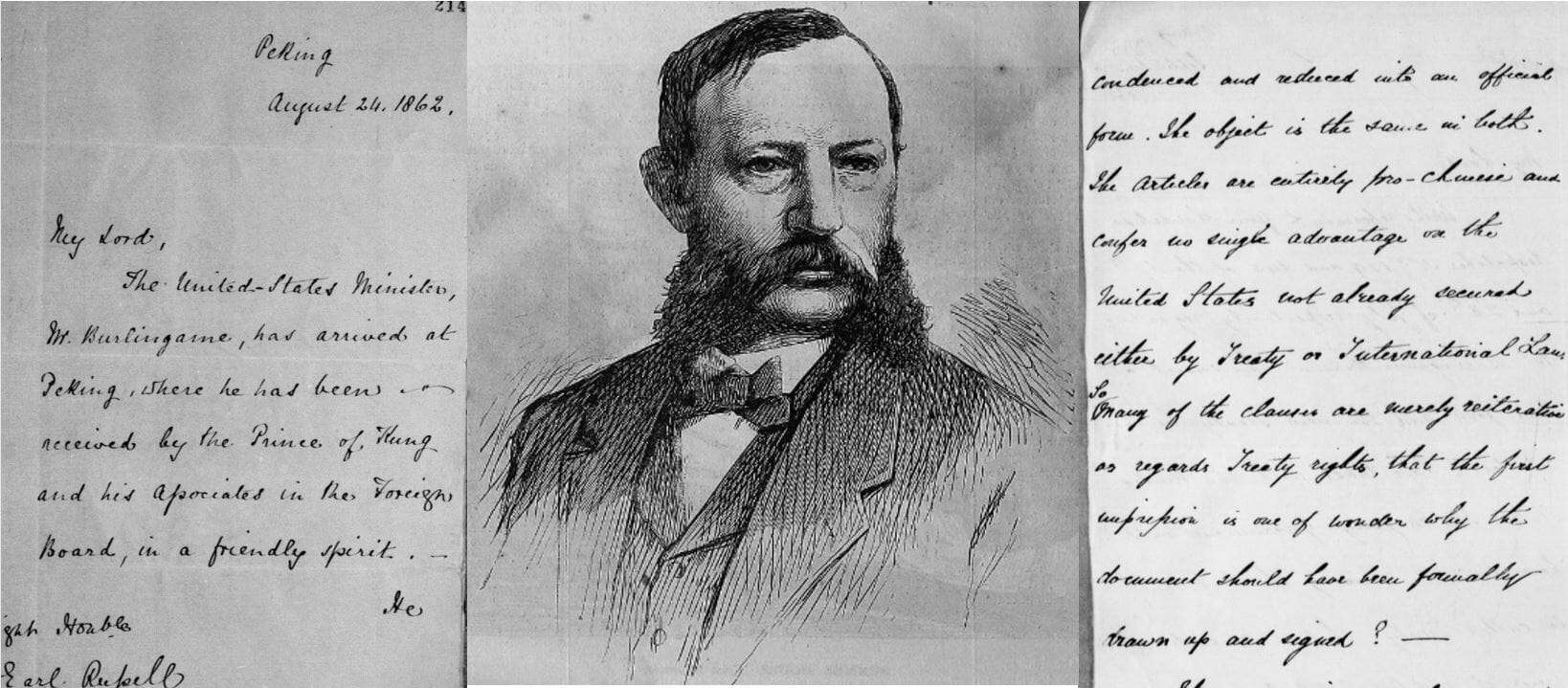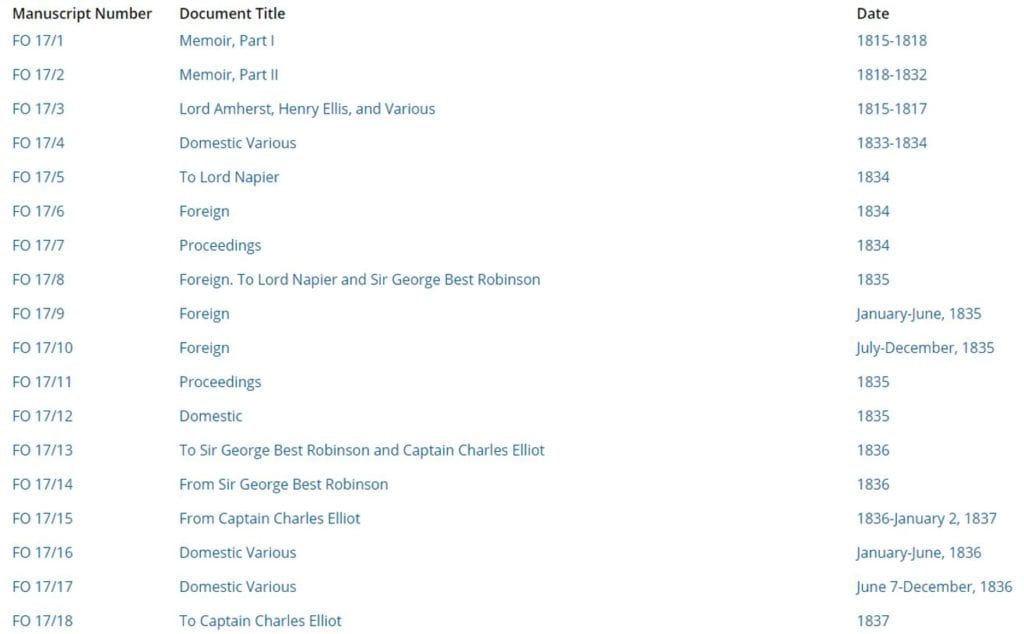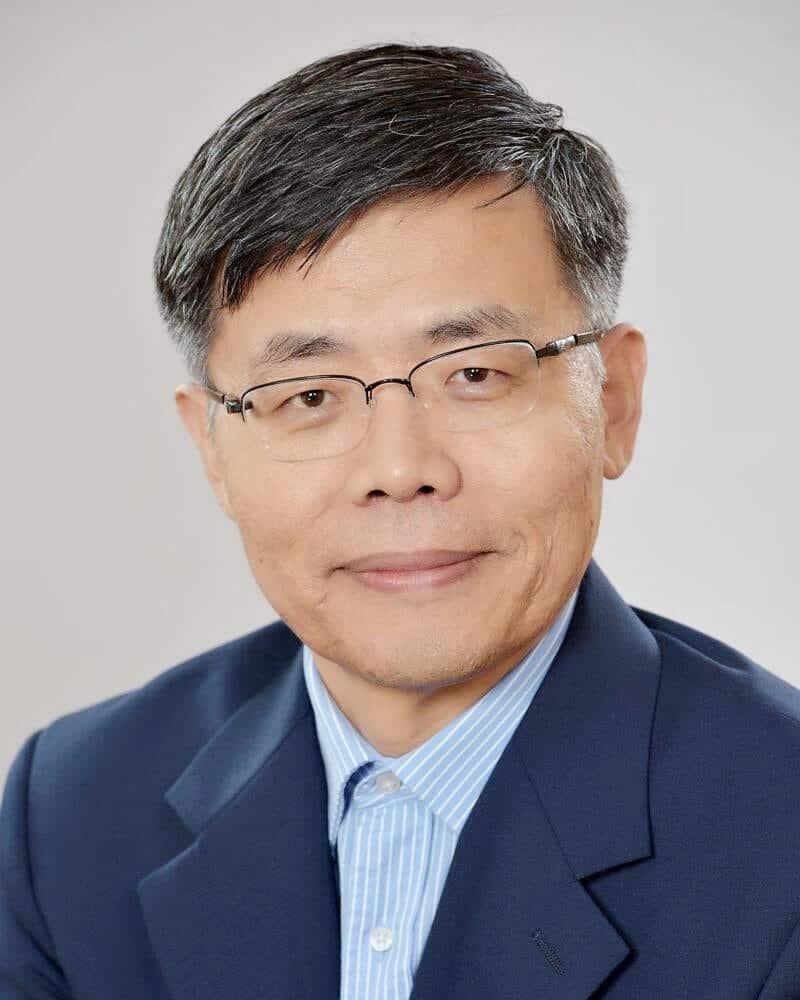│By Liping Yang, Publishing Manager, Digital Archive and eReference, Gale Asia│
US–China relations have been somewhat strained in recent years – a situation that may not be easily resolved by Joe Biden’s administration. This difficult period in the history of American and Chinese relations started when the US raised tariffs on Chinese imports, triggering China to impose retaliatory tariffs on US products. This trade conflict later escalated into a confrontation on many fronts, including technology. Many people have been racking their brains about how to ease the tensions. We can draw inspiration from the past by examining interesting historical records which show positive diplomatic relations between the two nations. Many such records are included in Gale’s digital archive collection China and the Modern World: Imperial China and the West Part 1, 1815-1881.
Anson Burlingame’s diplomacy between China and the West
In 1867, Anson Burlingame (浦安臣; 1820–1870), a founding member of the American Republican Party, was appointed the Chinese Qing Dynasty’s envoy to lead a Chinese diplomatic mission to visit the United States and Europe. During these visits (1867–1870), he fought hard for the interests of China and managed to renegotiate several treaties with the Western powers on behalf of China. Almost forgotten today, Burlingame became a legendary diplomatic figure well-known in the late years of the nineteenth century for his meritorious services rendered to two countries—the US and China.
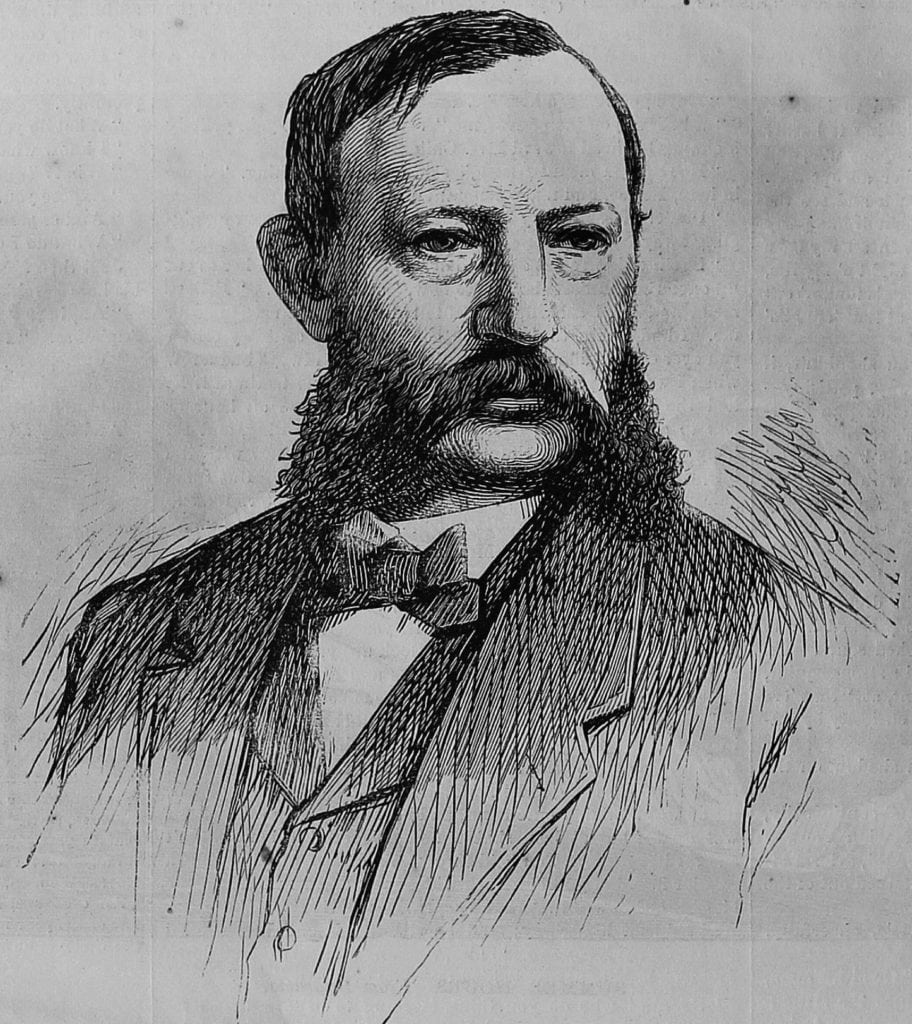
“Hon Anson Burlingame.” The Illustrated Chicago News, vol. 7, no. 1, 6 June 1868, p. 108. American Historical Periodicals from the American Antiquarian Society, https://link.gale.com/apps/doc/WPZXOZ482361485/GDCS?u=asiademo&sid=GDCS&xid=f044d25a
Burlingame’s diplomatic career started in 1861 when President Abraham Lincoln appointed him the US minister or the top American diplomat to China. His arrival in Peking in August 1862 attracted the attention of the British minister to China, Sir Frederick Bruce, who sent a special despatch dated August 24, 1862 to British Foreign Secretary Sir John Russel: “The United States Minister, Mr. Burlingame, has arrived at Peking where he has been received by the Prince of Kung and his associates in the Foreign Board, in a friendly spirit.”
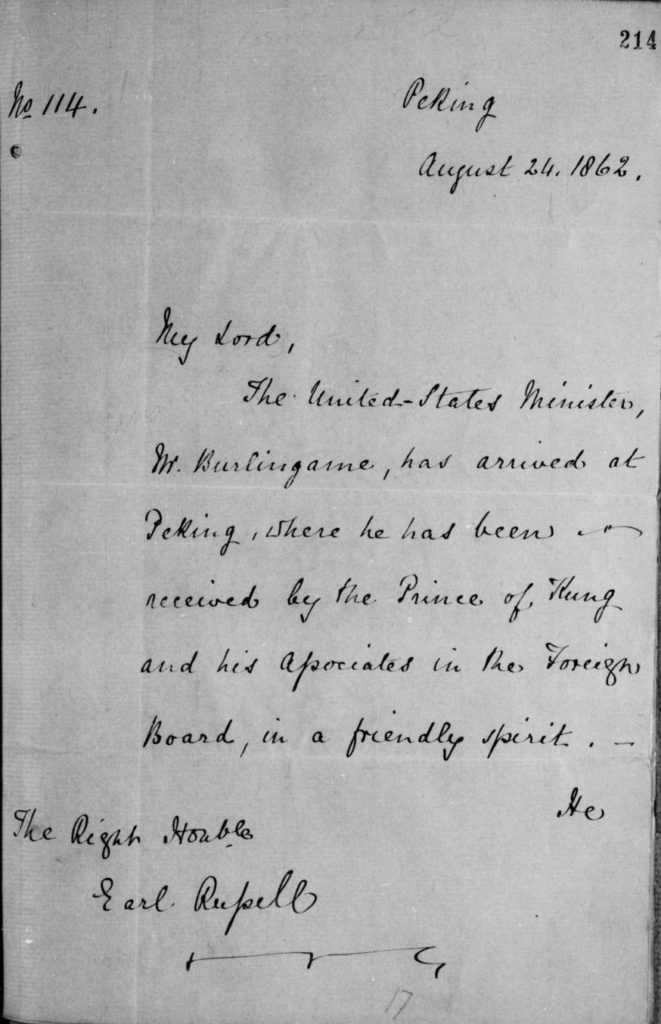
From Mr Bruce. July 5-September 10, 1862. MS Foreign Office: Political and Other Departments: General Correspondence before 1906, China FO 17/373. The National Archives (Kew, United Kingdom). China and the Modern World, https://link.gale.com/apps/doc/BKWQPT551554465/CFER?u=omni&sid=CFER&xid=4676ff14&pg=230
During his five-year tenure as the US minister to China, Burlingame expressed his sympathy toward China’s situation and promoted a cooperative and friendly policy toward the country among the Western powers. This earned him high respect from the Chinese government. In late 1867, when Burlingame retired from his American ministership, the Chinese government appointed him their envoy. He happily accepted this appointment and left for the US immediately as the head of a Chinese mission consisting of two Chinese ministers, two foreign secretaries, and six Chinese students.
The Chinese mission received a warm reception by American President Andrew Johnson in Washington DC. While in the US, Burlingame made a series of powerful speeches to present his pro-China views and persuaded the US government to sign a favourable treaty, which was later named after him. The British minister Rutherford Alcock remarked in a despatch to the British Foreign Secretary, “the articles [of the treaty] are entirely pro-Chinese and confer no single advantage on the United States.” The Burlingame Treaty is considered by many scholars today as the very first equal treaty ever signed by China with the West during the century-long period of 1842–1949. Burlingame unfortunately died of pneumonia during the Chinese delegation’s visit to Russia after Britain, France, Denmark, and Norway.
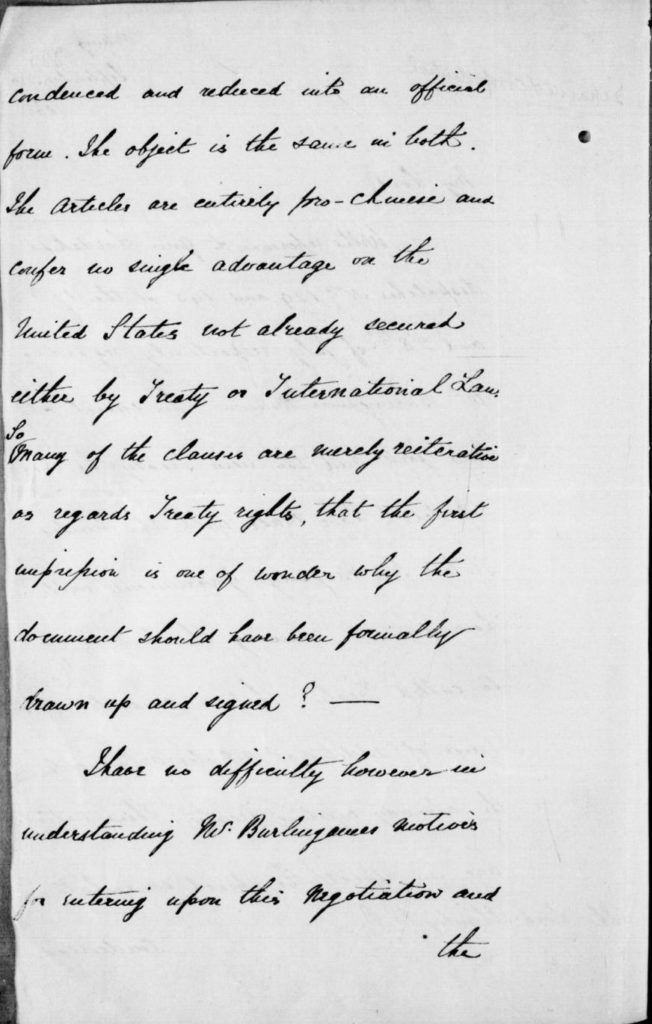
From Sir R. Alcock. July 20-September, 1868. MS Foreign Office: Political and Other Departments: General Correspondence before 1906, China FO 17/499. The National Archives (Kew, United Kingdom). China and the Modern World, https://link.gale.com/apps/doc/DUJFCW981539171/CFER?u=omni&sid=CFER&xid=ada2dc5a&pg=319
FO 17 series of British Foreign Office files
The above-mentioned records relating to Burlingame form only a tiny portion of those files pertaining to him and the US–China relations contained in Gale’s archive China and the Modern World: Imperial China and the West Part I, 1815-1881. This digital archive presents a large collection of fascinating historical documents touching on many other countries, especially the European powers represented by Britain and France, as well as China’s neighbours like Japan and Korea, and some Southeast Asian countries including Siam (Thailand), Cochin-China (Vietnam), Malaya (Malaysia and Singapore), and the Dutch East Indies (Indonesia). There are even files relating to Australia and Peru.
Based primarily on the entire FO 17 series of British Foreign Office files held at the UK National Archives, Imperial China and the West, when complete, will consist of approximately 1.1 million images of manuscripts, maps, and clippings, providing a vast and significant primary source for researching every aspect of China–West relations during the nineteenth century, covering a wide range of topics, such as diplomacy, trade and commerce, politics, warfare, emigration, law, and translation. The archive also includes despatches from the British consul general based in Seoul, Korea for the period of 1890–1905. The archive is split into two parts: Part 1 (1815–1881) and Part 2 (1865–1905). The second part also contains volumes from the FO 83 series.
Academic Value of the Module
FO 17, the core of Imperial China and the West, is widely recognised among scholars researching nineteenth-century China and Asia as one of the largest and most significant collections of historical documents in English. Gale’s decision to digitise this large archival collection is driven by the feedback of a group of prominent scholars from across the world. Professor Stephen R. Platt from University of Massachusetts at Amherst lent his full support to the digitisation of FO 17 as he himself has heavily consulted the series in his recent book Imperial Twilight: The Opium War and the End of China’s Last Golden Age (2018). For him, FO 17 comprises an ocean of fascinating primary sources on Britain’s engagement with and knowledge of China in the nineteenth century. The collection covers an era when China’s modern foreign relations were born and can illuminate our understanding of the Opium Wars, the gunboat diplomacy, and the unequal treaties. The abundant material contained therein sheds light on many significant historical events that are familiar to anyone researching modern Chinese history, such as the Taiping Rebellion, the Sino-Japanese War, the anti-foreign and anti-Christian events represented by the Tientsin Massacre (1870) and the Boxer Rebellion in 1900, as well as the beginnings of revolutionary activity against the imperial dynasty in the early twentieth century led by Dr Sun Yat-sen.
Professor Hans van de Ven of Cambridge University highly praised Gale’s decision, stressing that “to have this largely handwritten archive made available in a searchable digital format would be transformative.” This will benefit “most scholars today, and especially those in Asia, [who] have problems reading cursive script.”
Other scholars who supported this digitisation project include but are not limited to Professor Isabella Jackson (Trinity College Dublin), Professor Huang Ko-wu (Academia Sinica), Professor Eiichi Motono (Waseda University), Professor David Faure (Chinese University of Hong Kong), Professor EI Murakami (Kyoto University), and Professor Johnathan Farris (Youngstown State University).
Based on the feedback of the above-mentioned scholars and Gale’s investigation of the undergraduate and graduate courses offered by universities around the world, this large and invaluable digital archive will benefit all the scholars around the globe engaged in the teaching and researching of the following subject areas: China in the nineteenth century, the history of Modern China, Chinese intellectual history, the history of Chinese/British Diplomacy or British-Chinese relations, empires and colonialism in Asia, the history of Chinese emigration, translation studies, the history of architecture, and so on.
New Digital Archive Feature
Given the wide popularity of FO 17 among scholars of nineteenth-century China and the world, and the feedback of librarians and faculty members, Gale has debuted a completely new feature with Imperial China and the West—Browse Collection. With this function, scholars will be presented a browsable list of files arranged in the original order as shown in the finding aid and catalogue created by the source library. The order is driven by the alphanumeric manuscript number and the list displays three elements: Manuscript Number, Title, and Date Range. This feature is designed to recreate the research experience in the library environment, where finding aids and catalogues provide the most frequently used tool for searching and locating the files a researcher is interested in. At the same time, each item in the browsable list is linked to the digitised volume of files and users can simply move their cursor across the list and quickly click into a selected volume to find the specific files contained therein. It is hoped that scholars who are well-acquainted with FO 17 will find this feature convenient and helpful.
It also needs to be noted that this browse collection feature will be applied to all previous modules in Gale’s China and the Modern World series.
To read more about the fascinating material included in this archive, check out these Content Highlights in the Archives Explored hub of the Gale website, which cover:
- Lord Amherst’s Mission and Revisionist Scholarship
- Western Chinese-language experts: Karl Gutzlaff and Thomas Wade as Translators
- The anti-Christian Tientsin Massacre in the Press
- Guo Songtao and Zeng Jize Defending Chinese Interests
- Historical Maps of China
If you enjoyed reading about China and the Modern World: Imperial China and the West Part I, 1815-1881, you may enjoy the blog posts below which also explore diplomacy and interaction between China and the West:
- An American Missionary with Two Motherlands: Joseph Beech and West China Union University
- The George Macartney Mission to China, 1792–1794
- and Who is the Founder of Modern Singapore?
Blog post cover image citation: A combination of three images included in this blog post – please see full citation in image captions above.

